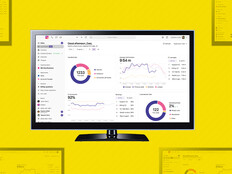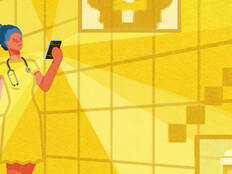CHIME Fall Forum 2018: Push Notifications Simplify Nurse Workflow at Phoenix Children’s
These days, there’s hardly a soul out there manually checking their social media accounts, email or messaging services. Nudge notifications have taken over, alerting us in real time when something is new or needs our attention. As health systems everywhere arm themselves with smartphones, tablets and secure messaging services, there’s a chance to use the same principles to streamline healthcare.
Already, Phoenix Children’s Hospital in Arizona has put nudge notifications and automated text messages to work with the aim of making the lives of one particularly busy group of individuals a bit easier: nurses.
The hospital has designed an interface that automatically triggers nudge notifications when specific events occur in the electronic health record, alerting nurses to important patient information at the right times.
“What we’re trying to do is perfect what a lot of healthcare organizations are doing today,” said David Higginson, executive vice president and chief administrative officer at Phoenix Children’s Hospital, speaking at the 2018 CHIME Fall Forum in San Diego this week. While communications between providers and patients are still mostly manual today, reliant on calls back and forth, the team has found that there is a way to automate much of this communication using the information and tools already at their disposal.
“We don’t want the input just to come from a monitor or something that’s connected via an interface. We’ve got information that’s in our EHR in real time that we want to then package up and provide in a useful way, so that people not only have knowledge of what’s going on, but they can take an action on it,” Higginson said. “How can we inform people of what’s happening around them by pushing the notifications to them rather than logging into the EHR and making a phone call?”
VIDEO: See how Phoenix Children's prioritized patient satisfaction with an iPad in every room!
Nudge Notifications Make Nurses’ Lives Easier
Phoenix Children’s is already using these push notifications in a variety of ways that are measurably improving the care-delivery process.
One way is notifying surgeons about rescheduled surgeries. While procedures are often rescheduled the day of surgery for a variety of reasons, surgeons often don’t get the information in time — meaning the surgeon doesn’t have ample time to prep the patient and often causing delays or cancellations.
“In our organization, we were relying on phone calls to get that information, because even though the surgery schedule was available online the nurse never thought to go check the schedule online,” said Higginson. “So, we scanned the surgery schedule every minute, found a chain for the same day and sent the notification using the vendor’s API directly to the nurse saying, ‘Hey, the surgery moved up.’”
While this may seem trivial, it has already had an impact.
“In the first week, this caused three surgeries not to be delayed or cancelled because the patient wasn’t ready,” Higginson notes.
The organization has also deployed these same notification tactics to remind nurses to provide patients with the medications they brought into the hospital upon discharge, something that’s often forgotten and can end up costing the patients hundreds of dollars if the medication is thrown out before they can return for it.
Phoenix Children’s wants to go further, with notifications for nurses that alert them to open shifts and to remind them to clock in or document medication administration. Higginson notes the organization is also seeking to offer nudges to providers that can prompt them to seek alternate paths for patients that might be awaiting certain tests before discharge, scheduling them for outpatient procedures or tests instead of keeping them in the hospital for days awaiting a single test.
Automated Texts Keep Patients in the Loop
But this isn’t the only way automatic notifications are coming into play. Phoenix Children’s has developed automated texts for both clinicians and patients to keep them better informed of the care process.
For clinicians looking for a better way to know when a patient is ready to see them, the hospital has developed a way to text that a patient is ready and waiting.“For doctors that love it, this is a lifeline because they get the message in real time and they don’t need their admin or nurse running around to let them know,” said Higginson.
For patients in the emergency department who often wait hours without knowing when they’ll be seen, the hospital has developed automated texts for them as well. Patients in the emergency department who sign up for text information get a welcome text as well as an update every 30 minutes they are waiting to assure them the hospital is still aware of their need for attention. Texts also alert them to when clinicians are able to see them and usher them through the process, explaining next steps along the way.
This is far from all that the hospital has done and will do with automated notifications for providers and patients alike. Higginson wants to make plain, however, that it doesn’t take a huge amount of time, effort or any fancy technology to make these sorts of notifications a reality.
“This is not artificial intelligence, machine learning or Big Data,” said Higginson, noting that the system is actually just an SQL query paired with an API. “This is very easy to do, and you can do it yourself.”
Keep this page bookmarked for articles from the event. Join the conversation by following us on Twitter @CDW_Healthcare.










